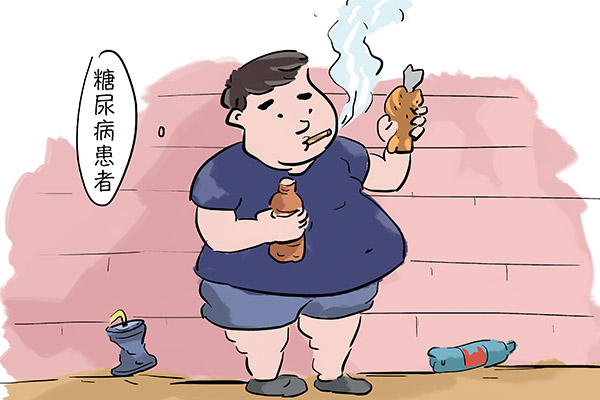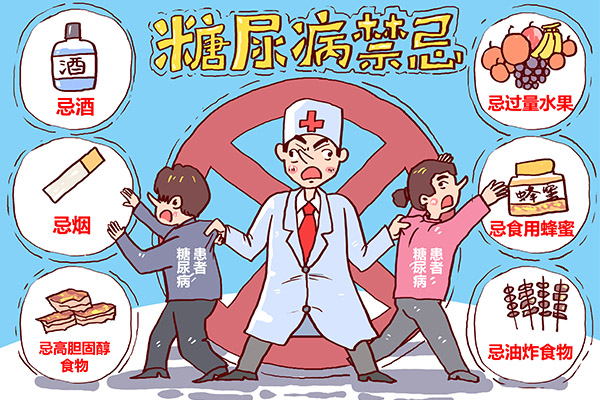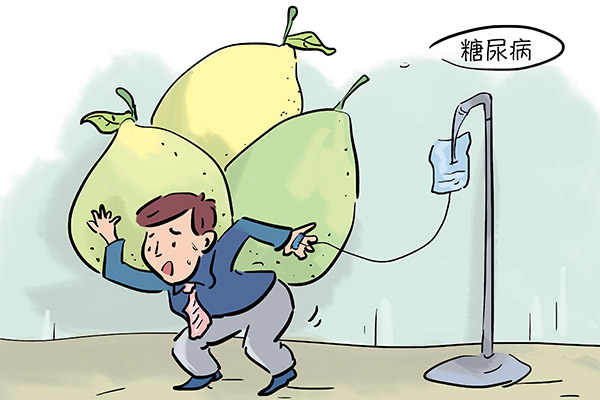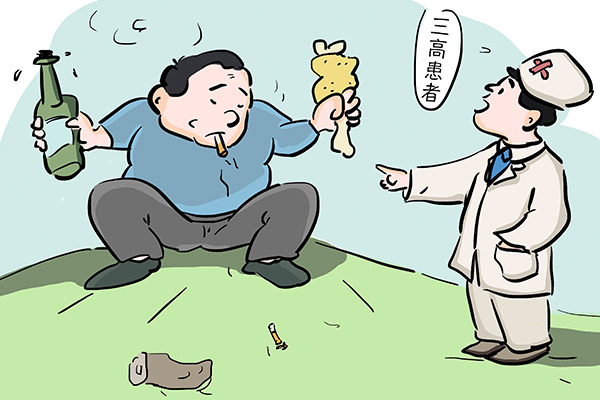Diabetes is a common disease in our life. In the early stage of onset, some symptoms will appear, but some are not obvious and easy to be ignored, leading to delayed treatment, so understanding the symptoms of early diabetes is the key. Here are 12 signs of early diabetes.

12 signs of early diabetes
1. fatigue
It is also common in diabetic patients, because glucose can not be completely oxidized, that is, the human body can not make full use of glucose and effectively release energy, at the same time, tissue water loss, electrolyte imbalance and negative nitrogen balance, etc., so they feel weak and depressed.
2. Weight loss
Although the appetite and appetite of diabetic patients are normal or even increased, the weight loss is mainly due to the absolute or relative lack of insulin or insulin resistance, the body can not make full use of glucose to generate energy, resulting in the increase of fat and protein decomposition, excessive consumption, negative nitrogen balance, gradual weight loss, and even emaciation.
3. polyuria
Because the blood glucose is too high, which exceeds the renal glucose threshold (8.89-10.0mmol / L), the glucose filtered out by the glomerulus cannot be completely reabsorbed by the renal tubules, forming osmotic diuresis. The higher the blood sugar is, the more urine sugar is excreted and the more urine volume is. The urine volume can reach 5000-10000ml in 24h. However, in the elderly and those with kidney diseases, the threshold of renal glucose is increased, and the excretion of urine glucose is impaired.

4. Dysuria
The incidence of dysuria in elderly male patients with diabetes is about 21% - 42%. This shows that diabetes is positively related to dysuria. If the elderly find dysuria, they should pay attention to the early diagnosis of diabetes besides the elimination of prostate problems.
5. Sexual dysfunction
High blood sugar can lead to neuropathy and vascular disease, which can lead to male sexual dysfunction, decreased libido and erectile weakness. Therefore, in the past, middle-aged men with normal sexual function, when impotence or erectile weakness occurs, blood sugar should be tested in time to eliminate diabetes. According to the survey, male diabetes patients with impotence accounted for about 50%.
6. drink more
It is mainly due to the increase of plasma osmotic pressure caused by hyperglycemia, plus polyuria, excessive water loss, intracellular dehydration, aggravation of hyperglycemia, further significant increase of plasma osmotic pressure, stimulation of thirsty center, resulting in thirsty and polydipsia. Excessive drinking further aggravates polyuria.

7. Repeated infection
Common biliary tract, urethra, lung, skin and other parts of the infection, the performance of repeated attacks, delay does not heal. According to statistics, the probability of diabetes mellitus complicated with tuberculosis is 3-5 times higher than that of normal people.
8. more food
The mechanism of overeating is not very clear. Most scholars tend to be due to the decrease of glucose utilization rate (the difference of glucose concentration in the blood of artery and vein before and after entering and leaving the tissue cells). In normal people, the concentration difference of glucose in the blood of artery and vein decreased when they were fasting, which stimulated the feeding center to produce hunger; after feeding, the blood glucose increased, the concentration difference in the blood of artery and vein increased (more than 0.829mmol / L), the feeding center was inhibited, the satiety center was excited, and the feeding requirements disappeared. However, due to the absolute or relative lack of insulin or the insensitivity of tissue to insulin, the ability of tissue to absorb and utilize glucose decreased.
9. Upper body obesity
Upper body obesity refers to the ratio between waist circumference and hip circumference is greater than 0.7-0.85, especially the upper body obesity in women. The abnormal glucose tolerance test in this population is as high as 60%. Therefore, some experts believe that this kind of upper body fat body shape can be used as a diagnostic indicator of diabetes.

10. Flaccid glossitis
It refers to the atrophy of the central part of the tongue, which is characterized by a local withered defect without tongue coating. The incidence of atrophy is as high as 62% in the diabetic population. From the perspective of traditional Chinese medicine, this kind of moss belongs to the map tongue, which is often the manifestation of yin deficiency, that is, "thirst quenching" of traditional Chinese medicine.
11. Pruritus
The itching of the whole body skin will even affect the sleepers at night. This is one of the classic manifestations of the early symptoms of diabetes. Because the hyperglycemia of diabetes damages the whole body microvasculature, and then affects the nutrition supply of the skin, the patients will often feel the itching discomfort of the whole body.
12. Vision loss
Many diabetic patients in the early treatment, the main complaints of vision decline or fuzzy, which may be caused by hyperglycemia and changes in crystal osmotic pressure, resulting in changes in crystal diopter. In the early stage, there are many functional changes. Once the blood sugar is well controlled, the vision can return to normal quickly.
These are the 12 signs of early diabetes. If you have symptoms such as polyuria, pruritus and decreased vision in your daily life, you should be careful of the onset of diabetes.









